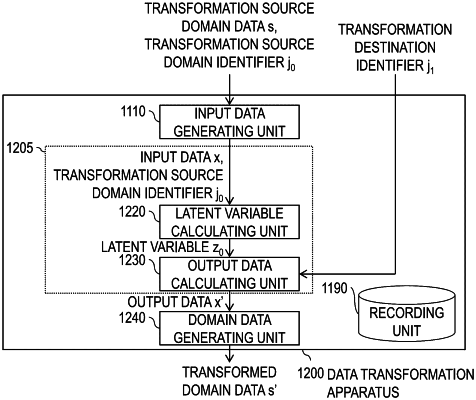| CPC G10L 25/51 (2013.01) [G06N 3/045 (2023.01); G06N 3/088 (2013.01); G10L 25/30 (2013.01)] | 19 Claims |

|
7. A probability distribution learning apparatus comprising a processor configured to execute operations comprising:
receiving normal sounds for learning, wherein the normal sounds for learning are normal sounds emitted from one or more pieces of equipment that are different from anomaly detection target equipment; and
learning a first probability distribution, wherein the first probability distribution indicates distribution of normal sound emitted from one or more pieces of equipment that are different from the anomaly detection target equipment, from the normal sounds for learning,
wherein a variable x of the first probability distribution q1(x;θ) is a variable indicating input data generated from the normal sound emitted from the one or more pieces of equipment different from the anomaly detection target equipment,
the variable x is expressed as x=fK(fK-1( . . . (f1(z0)) . . . )) using transformations fi(i=1, . . . , K, K is an integer of 1 or greater, and inverse transformations fil exist for the transformations fi) and a latent variable z0,
q0(z0) is set as a probability distribution of the latent variable z0,
a probability density q1(x;θ) of the input data x is calculated using a probability density q0(z0) of the latent variable z0=fi−1(f2−1( . . . (fK−1(x)) . . . )) corresponding to the input data x, and
at least one inverse transformation of the transformations fi(i=1, . . . , K) is adaptive batch normalization; and
transmitting the first probability distribution to an application configured to train anomaly detection neural network using the first probability distribution as anomaly training data.
|